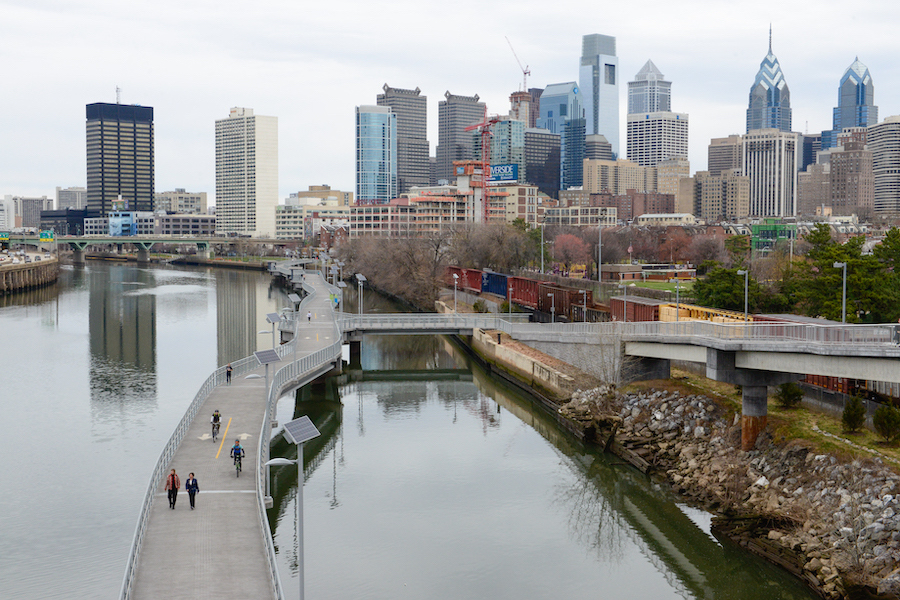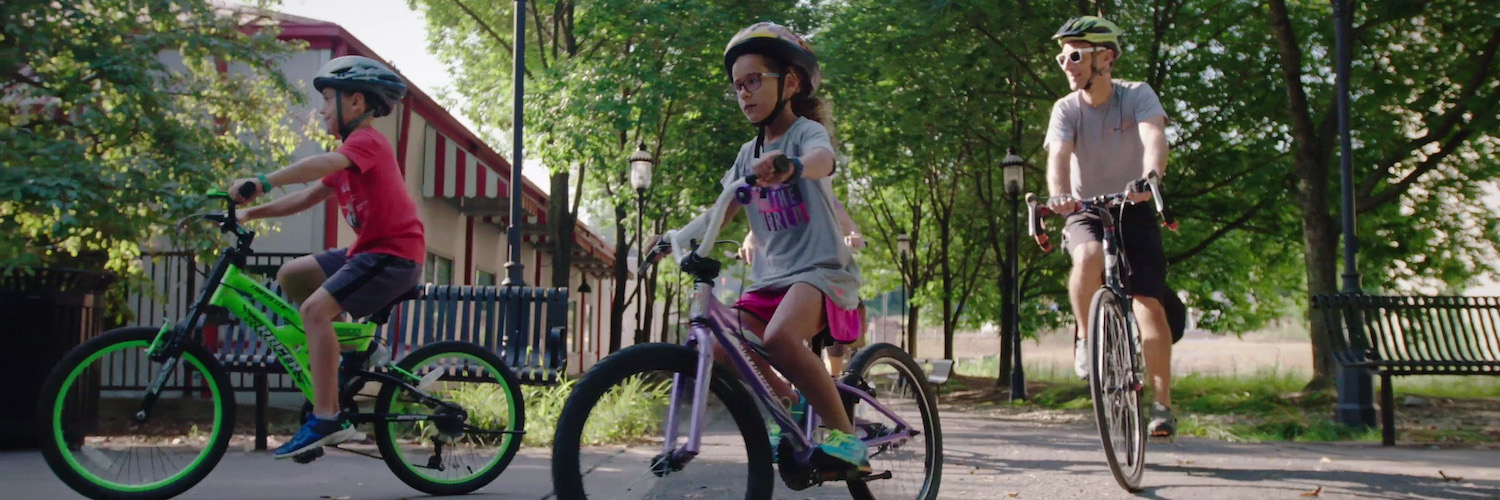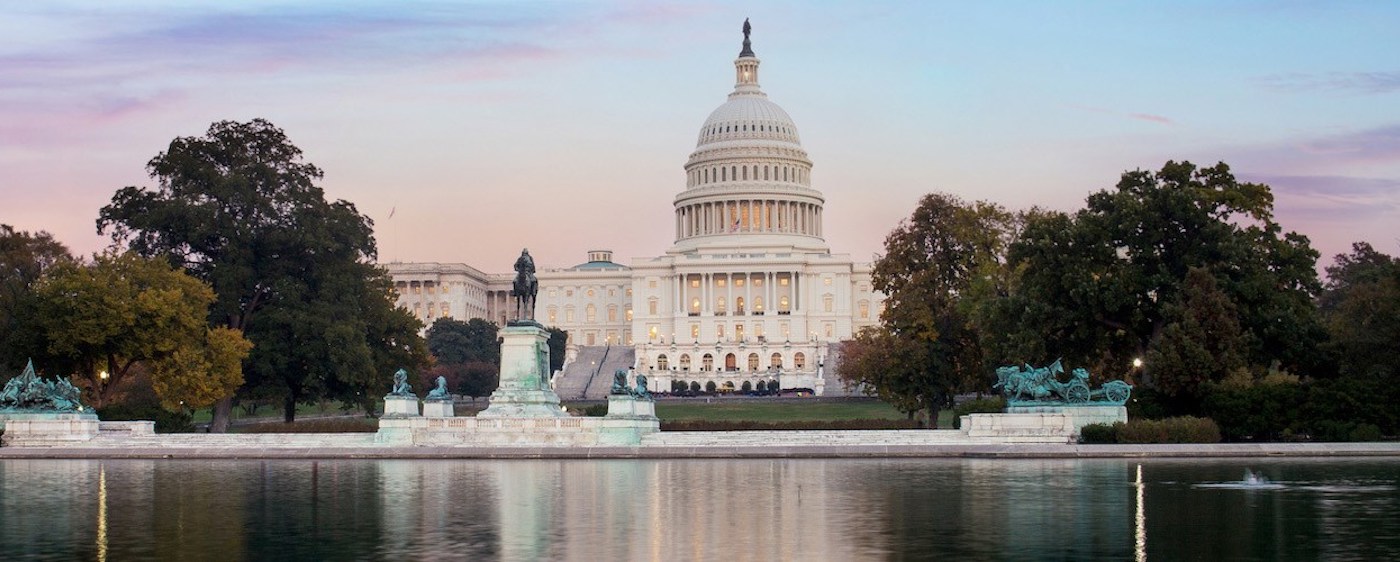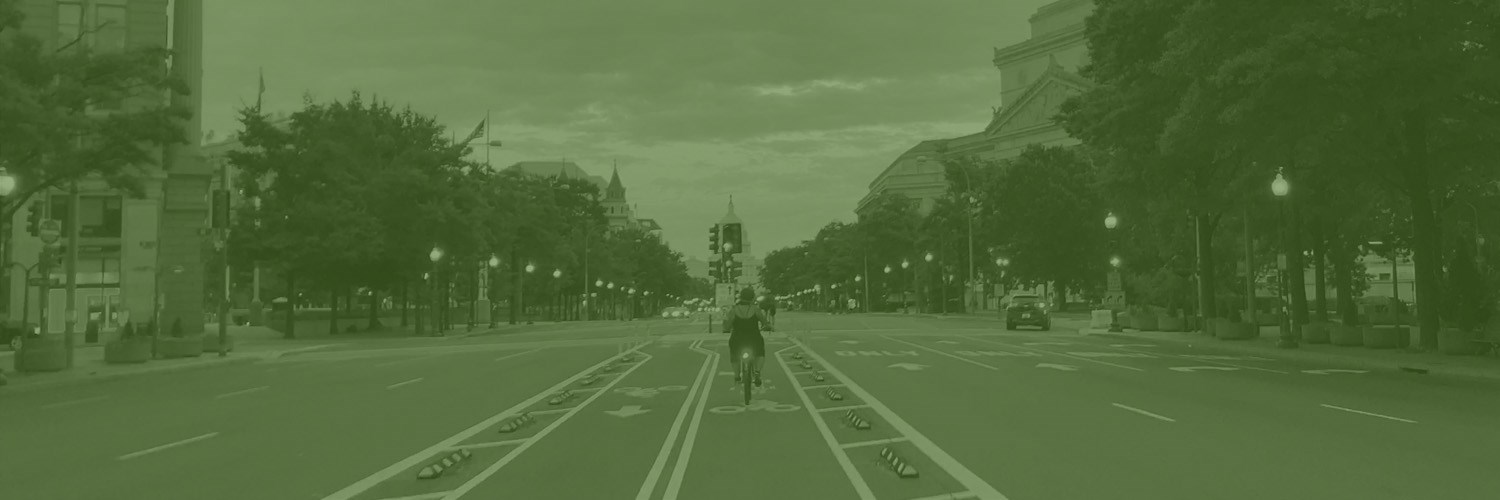Active Transportation Infrastructure Investment Program
Photo courtesy Getty Images
NOFO | Eligibilities | FAQ | Resources | Advocate for ATIIP Funding
The Federal Highway Administration announced the inaugural round of funding for the Active Transportation Infrastructure Investment Program (ATIIP). The first round of ATIIP funding provided nearly $45 million for active transportation networks and was oversubscribed by applications at a ratio of 40 to 1, with 350 communities requesting $1.8 billion.

We will continue to add additional insights and resources on this first round of funding, but you can view a full list of the grantees here, as well as RTC’s press release on the program here.
The Fiscal Year (FY) 2023 Omnibus Appropriations bill that passed on December 23, 2022, includes funding to kick-start the Active Transportation Infrastructure Investment Program (ATIIP).
The bill includes $45 million for the program. While short of the $200 million ATIIP authorization in the Bipartisan Infrastructure Law and the $500 million that RTC and Congressional champions called for in proposing the Connecting America’s Active Transportation System Act, this funding is critical to launch the program and demonstrate that connectivity investments are in high demand across the country.
The program establishes competitive grants that strategically invest in projects that connect active transportation networks and spines, accelerating local and regional plans to create safe and convenient walking and biking routes to everyday destinations and to fill gaps in trails between communities.
This unique program enables communities to build from existing infrastructure for walking and biking to safely connect people to the destinations they travel to routinely, while also creating opportunities for sustainable transportation and recreation.

Quick Facts:
- Administered By: USDOT
- Type: Discretionary grants
- Year Created: 2021
- Also Known As: The Connecting America’s Active Transportation System Act (H.R. 2991/S.684)
Eligibilities
The following are eligible project sponsors or applicants:
- Local or regional governmental organization (including metropolitan planning organizations or regional planning organizations and councils)
- A multicounty special district
- A state
- A multistate group of governments
- Tribal governments
The following project types are eligible for funding:
- Active transportation projects or group of projects with a total cost of at least $15 million for construction grants, or total cost of $100,000 for planning and design grants.
Frequently Asked Questions (FAQ)
Applications are now open for the inaugural, FY 2023 Active Transportation Infrastructure Investment Program (ATIIP). This new discretionary funding program will provide planning, design and construction grants for connected active transportation networks and spines. After hosting multiple webinars and office hours sessions to answer questions about the new program, the team at Rails to Trails Conservancy compiled a list of frequently asked questions to help applicants better understand the program and application process.
- When are applications due? Monday, June 17, 11:59 p.m., EDT
- What entities are eligible to apply? Eligible applicants include local or regional governmental organizations (including metropolitan planning organizations or regional planning organizations and councils), multicounty special districts, States, multistate group of governments, or Tribal governments.
- What are the recommended minimum and maximum grant request amounts?
- Planning and design grants: $100,000 minimum, $2 million recommended maximum
- Construction grants: $7.5 million recommended minimum, $12 million recommended maximum for general applicants and $15 million recommended maximum for qualified low-income communities
- What is the difference between the $15 million total project cost minimum and the recommended $15 million grant maximum?
- For construction grants, the total project cost, including match, must be at least $15 million.
- For example, there is a recommended $7.5 million minimum for construction grants, meaning the local match must be at least $7.5 million.
- $15 million is also the recommended maximum grant award size for qualified low-income communities. Specifically, if a majority of the census tracts served by a project have a poverty rate of over 40%, the project is eligible to receive up to the full $15 million. On the other hand, general applicants are recommended to apply for up to $12 million with a $3 million state or local match.
- For construction grants, the total project cost, including match, must be at least $15 million.
- What are the match requirements? The minimum match requirement for this and most federal transportation projects is 80% federal/20% state or local. There is a match exemption for projects serving an area in which most census tracts have a poverty rate of over 40%. You can find more information about match requirements and exemptions on pages 9-11 of the official NOFO.
- How can I make my application competitive? Are there types of projects or approaches that will be especially well-received?
- Address DOT and FHWA strategic goals: mode shift, safety, climate, equity, accessibility.
- Projects that connect active transportation networks to transit and community destinations, such as schools, will be well-received by FHWA.
- If you apply for funding for multiple segments within an active transportation system, it is important to demonstrate how these segments are part of a larger network, as the focus of the program is connectivity within and between communities.
- You could improve your score by demonstrating the transportation and mobility benefits of your project as opposed to exclusively recreational benefits.
- Projects with a larger match will improve their score unless they qualify for the low-income match exception, in which case they will receive a high score without a match.
- Additional merit and scoring criteria can be found in the official NOFO.
- How important is it to demonstrate community support or partnerships in the grant application, and how can applicants effectively showcase these? Community support is one of the six merit criteria, so demonstrating community support and partnerships is extremely important. One way you can showcase this support is through letters of support.
- Can this be used to fill multimodal gaps in Greenways, sidewalks, and bike lanes or is it only for multiuse paths? Yes, this funding is designed to fill gaps in all types of active transportation infrastructure, including sidewalks, crosswalks, multiuse trails and greenways and separated or painted bike lanes.
- What is the timeline for project completion? Upon completion of the project agreement, there is a…
- 2-year performance window for planning
- 5-year performance window for construction
- Can the funding be used to build trails on federal land? Yes, but only if an eligible organization enters into a cooperative agreement with the appropriate Federal agency prior to submitting an application.
Advocating for FY25 Active Transportation Infrastructure Investment Program Funding
RTC is now advocating for funding for the program in the Fiscal Year 2025. USDOT is developing its budget proposal for FY25, and RTC sent a sign-on letter with the support of 28 organizations to the administration requesting this funding. We will continue to make the case for the program to key decisionmakers ultimately responsible for the development of the next federal budget with a goal to fully fund the program.
Resources
Check out the following resources for more information about the program:
- First Round of Active Transportation Connectivity Grants Showcase Program Potential to Make American Towns and Cities Safer and Economically Resilient
- Nearly $45 Million in Grant Awards for Connected, Active Transportation Infrastructure Projects
- Active Transportation Infrastructure Investment Program Factsheet
- FHWA ATIIP Page
- FY 2023 Notice of Funding Opportunity (NOFO)
- RTC’s webinar on how to strategically apply for ATIIP
- Bipartisan Infrastructure Bill Passes with New Opportunities for Trails, Walking and Biking
- Connecting America’s Active Transportation System overview
- Connecting America’s Active Transportation System: Activating the Active Transportation Infrastructure Investment Program
- US Federal Highway Administration Active Transportation Infrastructure Investment Program (ATIIP)
- Grant opportunity on Grants.gov
FHWA is also encouraging applicants to take advantage of the following resources to help them strengthen their applications:
- FHWA Guidance: Bicycle and Pedestrian Planning, Program, and Project Development
- Pedestrian and Bicycle Funding Opportunities
- Guidebook for Measuring Multimodal Network Connectivity
- FHWA program contact: atiip@dot.gov

